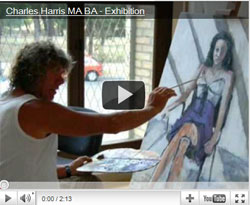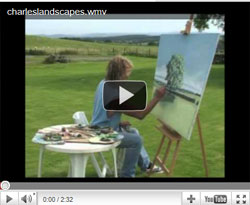TODAY IN OUR CITIES technology has leaped forward, but unfortunately, culture has been left behind, sadly stagnating. For the shiny decorative railings, we see are not art, they are just shiny decorative railings. The same is true of shiny decorative lamp posts, seat benches, shaped bits of metal, plastic fondue, or concrete objects, etc, – perhaps they may be decorative yes, but not art, alas.
Unhappily, these things arrived in our cities often in a casual way, yet became a fashionable habit. For when modern architectural buildings were erected, a piece of supposed modern art was produced to go with it. This usually had nothing in common with the culture and identity of its citizens and perhaps unintentionally, was a policy of social exclusion.
Yet the consequences of this foolish fashion quickly became a norm and this unsuitable habit became a bad convention of policy towards esoteric conceptual objects appearing and posing as art. Whilst as a sad and further detrimental effect of this mad excessive fashion swing; especially with the media; people were wrongly discouraged to express a fondness and respect for genuine art knowledge when wishing to draw from our own culture, traditions, and understandings from the past.
Here I define tradition as knowledge based on experience; and traditional classical art, as self-evident in the skills and benefits it has always offered. And this has become essential now, as a necessary change for the present and future; a warm human alternative in both new art and art education; while happily encouraging those traditions too, of our culture and identity.
Thus in our cities today we should be seeking appropriate art, all suitably situated; which is honest and beautiful to look at; which will stand the test of time; beloved by generations ahead and reflect our societies today; offering joy and a community vision; instead of a cold intellectual throw-away mentality. And happily here, I can also provide a local example of reconnecting our world with beauty, our Scottish traditions and the values of classical art.
From 25th November 2017 – 14th January 2018, the painting entitled the Monarch of the Glen by Sir Edwin Landseer, will be on show in the City of Perth. Acquired recently for the Nation, this display is ‘Organised by the National Galleries of Scotland with support from the Scottish Government, the Heritage Lottery Fund, and the Art Fund.’ I quote: ‘One of the most famous British paintings from the 19th century: for many people, it encapsulates the grandeur and majesty of Scotland’s highlands and wildlife.’
Completed with proper classical traditional standards, this painting elegantly shows a splendid animal alone in a delightful highland setting. The red deer stag’s facial features are delicate, but also strong, and his proud stance encourages us emotionally to feel proud of his solitary pose, in this wild but familiar highland scenery. While the painting and its content are held together within a bold beautiful three-dimensional drawing. It properly employs three clear temperature values and three traditional tonal values in a hard gained balance, which show us strength in this painting within a softness of mood, while gently talking about our environment we share. While the red deer stag himself, convincingly portrays the classical realism of this painting. It is a realism which is proud, strong, and noble, seen in every sense in the mastery and skill of this tradition landscape. With this picture, Landseer epitomises the character of strong local social identity, along with an understanding of our landscape, our culture, and our nation.

This exhibition of the Monarch of the Glen is I believe the first major traditional art event to occur in Perth for over 25 years. It signifies a break from the usual obsession with ‘Anything is okay modernism,’ which has become the norm. For presenting classical painting this event sensibly returns us to the long traditions of our culture. This is a new and suitable step today in bridging the lost and misunderstood gap between technology and culture. For this single work, executed properly with paint on canvas, portrays a convincing Scottish reality we all share. It is self-evident in content, and craftsmanship, using the lost skills of classical painting, that Landseer fully supported
So the display of this traditional painting is clearly an important first step, well away from that foolish obsession and cold confusion of modern conceptual art. And it may also be helpful, especially for the purpose of other cities, to consider some historical background that may help to explain how this extraordinary situation today has occurred over a long period of time, while suggesting alternative policy and proposals for our culture, identity, art, and art education, which can be adopted.
‘After the Second World War, the need for restoration and modernisation were paramount, and the word ‘Modern,’ became symbolic with these improvements. This occurred across society in differing degrees and activities, but with modern art, the idea was carried too far. A fashion became an obsession, and skill-based art was frowned upon as old-fashioned. This, in turn, lead to proper drawing being abandoned and frowned upon in education in favour of conceptual ideas, e.g. talking, writing, making artist statements, making videos. So in fine art, as a consequence of trendy foolishness, school pupils or university students were all being asked in effect to service a formula one racing car, practically equipped with just a pair of pliers and a screwdriver. Clearly, ‘a modern society does not need modern art, but needs appropriate art, and sensibly located accordingly.
Here the media, unfortunately, followed tamely, often employing modern artists themselves for their features, and with a few exceptions, most notably the late Brian Sewell, our media has sadly continued to present modernism in art as desirable. And this without their usual careful scrutiny, or suggesting any other directions in art is possible today; whilst the world’s best classical art from the ‘Great Tradition,’ which lead in all of the great developments of mankind still remains self-evident within our museums, yet without any media attempts whatsoever to address the disaster of its loss in education and public understanding.
The miserable consequences and long-term effects of all of this were felt strongly in education, where students we are not encouraged to make traditional ‘conventional’ art, and without those skills and standards needed in the making of Great Art, naturally it could not be expected to occur again regardless of any personal opinions or views to the contrary.
Unhappily, this situation described above continued to the present, where recently, leading figures in business and the CBI complained that in Art, university students were almost unemployable, as they could not draw properly, when advances in technology, in particular, the next generation of three dimensional computer programmes – all required good 3D drawing skills. The most important loss culturally to our societies has been in the absence of proven great art in keeping with the ‘Great Tradition’ and its traditional cultural values that lasted for more than seven hundred years and helped continuously with the development and improvement of mankind.
Yet happily this loss in art and in education has been recognised today, and an opportunity now exists to begin again afresh. Nevertheless, this black hole in Art also affected the outlook of many cities. It lead to poor modern attempts in public art, later described as ‘conceptual installations,’ yet claiming the status of Art, while clinging onto the coat tails of modern architecture to justify their existence. However, like those brutal high rise buildings of the 1960’s, they have both proved equally unsuitable for the real needs of human life and proper communities.
Thus Smart Cities do not have to be soulless places for citizens without proper Art. Alongside food and entertainment, cities can now encourage a genuine taste of new art for its citizens. Art which reconnects our world with proven beauty, that touches our hearts and fills us with pride and wonder. It is for this purpose that I believe new classical art, which reveals a love of human nature, and the countryside, offering beauty and appealing to the human heart, can have an appropriate place.
In Cities, we need this new art, not just more of that expensive cold modern fashion object, like decorative kerb railings; lifeless knobbly lamp posts; or flowery metal waste paper bins. Miserably, this all become incompatible with sincere feelings of love for life, nature, and human nature, which it cannot portray; with that subsequent loss of conventional wisdom, experience, practical skills, learned ability, tradition, and knowledge.

New Smart cities need new art that truly celebrates its heroes with statues and fountains, that can pay for themselves with pennies thrown into the pools, or with proper human classical portraits that look like the person, which everybody can immediately appreciate and enjoy, realistic new city landscape paintings, revealing the actual beauty of the city itself, for us to feel proud about. These activities can easily be organised, with funding sought, encouraged anew, afresh, for proper new art, without the old 20th-century cynicism and visual doubts about it.
These can also be supported by a greater local art education, with new inexpensive academic drawing classes, not modern art drawing, but proper drawing and appreciation for all ages, encouraging city people to describe their own visual pleasures within their communities. This would also encourage people of every age to talk to each other, young or old, to say what they see and think of their local environment and their communities and not encourage the social exclusion that occurs.

And unlike today, we may also see appropriate art as well as the suitability of location for public art, chosen with more care, creating as Thomas Hardy wrote: “One of those spots outside the gates of the world where may usually be found more meditation than action; where reasoning proceeds on narrow premises, and results in inferences wildly imaginative; yet where, from time to time, dramas of a grandeur and unity truly Sophoclean are enacted in the real, by virtue of the concentrated passions and closely-knit interdependence of the lives therein.”
These new works could then be displayed in public halls, museums, etc; with scenes of lighted shops and streets, the assortment of trade, the business people, the bars and restaurants, the cars, the buses, the traffic, the dodgy dives and the elegant promenades; the romance and the drunken scenes; city life, the crowds, the dust and clamour, the sunshine as it falls upon those walls and pavements, food for the soul, which fills the heart with gladness, showing familiar local views of shared human life. While the landscape, be it a forest, glen, hill, mountain, river, or the sea, remain scenes of joy for us all to experience or share in new realist art, which links our present landscape with our past.
Charles Harris MA.BA
(Copyright Charles Harris 2017.)




